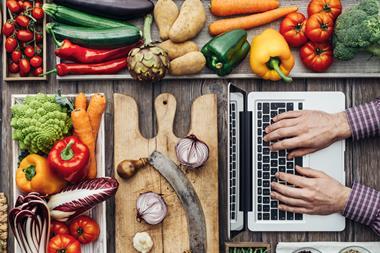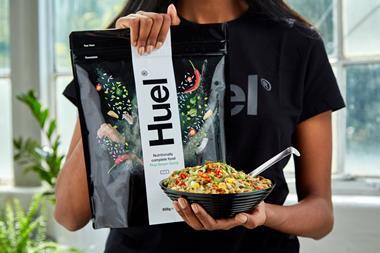
Recent research in the US has suggested that, this year, more than one in five adults will use a grocery app to order food at least once a month. That would equate to nearly 23 million people, up from 18 million last year. Moreover, more than 30 million adults could be using an app to order groceries by 2022. With the possibility that, as often happens, the trend migrates across the Atlantic, UK suppliers, many of which are yet to fully embrace e-commerce, need to consider the additional factors if the UK sector embraces mobile to a similar extent.
The recent Opinium Retail Tracker showed that grocery shopping by smartphone is increasing here, with a quarter of those who do their big shop online choosing smartphones as their shopping device of choice – highest among the 25 to 44-year-old demographic.
The development is increasingly the result of time-poor shoppers with a desire for convenience and speed. A recent study in the US found that shoppers spend about 43 minutes on a typical grocery shopping trip. They calculated that for somebody shopping twice a week, that works out to 75 hours a year, or two weeks of your annual holiday, grocery shopping. That’s the issue that apps are addressing and, given that UK smartphone penetration has now reached 85% of the adult population, one thing is clear: mobile matters.
Smartphones to supermarkets: how digital is driving the 2019 experience
As a brand, if your content is not ready for mobile, then, in reality, you are not truly ready for e-commerce.
There will be practical considerations. App use on a smartphone means a smaller screen, with fewer products per page and, therefore, smaller images. Brands will need to consider the type of image that will have maximum impact and best reflect the product on a smaller screen. This is likely to be different to that used on a web platform viewed on a laptop or even a tablet. Brands also need to adapt to the differences between apps from different retailers.
There are also behavioural differences to understand. Grocery apps already compare retailers and enable users to find the best shop either for a whole list or a single item; that enable them to compare prices, and even spot the best offers and receive personalised vouchers. Moreover, because shoppers tend to default to products already in their favourites lists, there is an imperative for brands and retailers to actively engage with app users via their smartphones.
The portability of smartphones means shopping is available 24 hours a day, seven days a week, anytime and anywhere. Apps also allow people to easily update or top up their shopping list during the course of a week, adding items to their shop as they go along. So, the time is fast approaching when brands need to adopt a ‘mobile first’ strategy, that addresses the changing landscape in which laptops are being put away and shoppers turn to their smartphones for their grocery needs.
John Nevens is joint managing director of Bridgethorne



















No comments yet